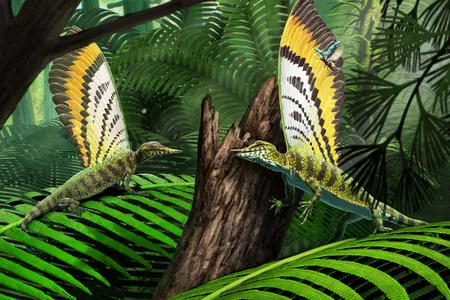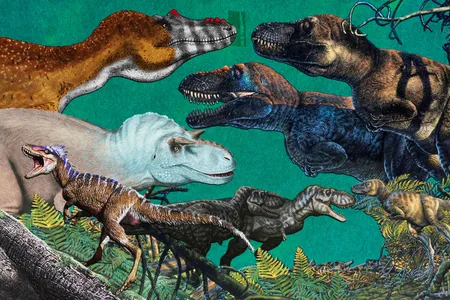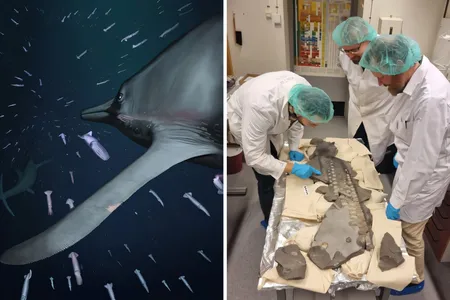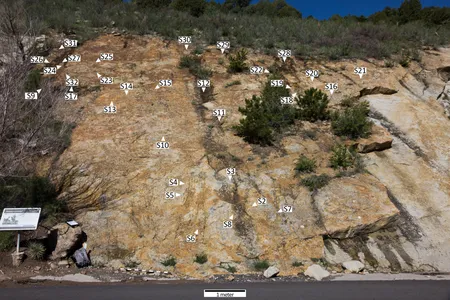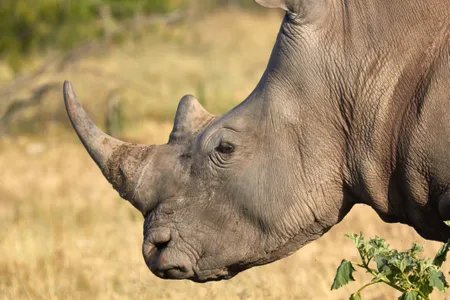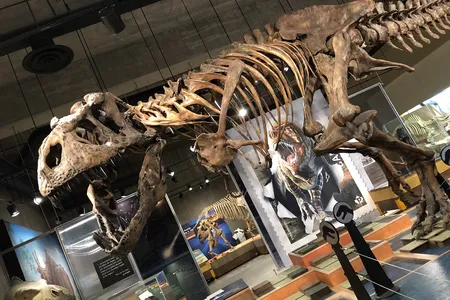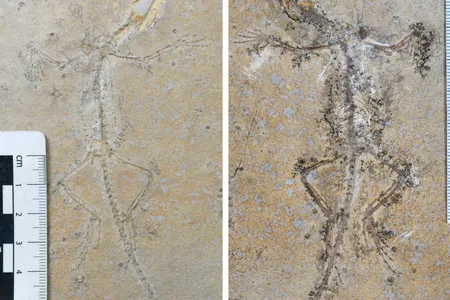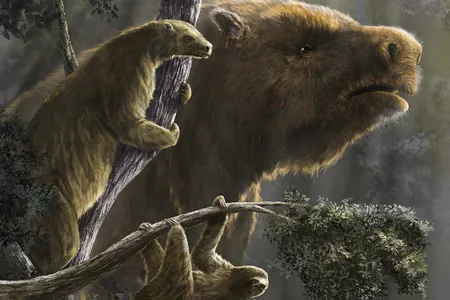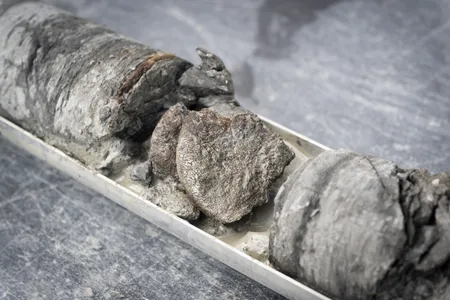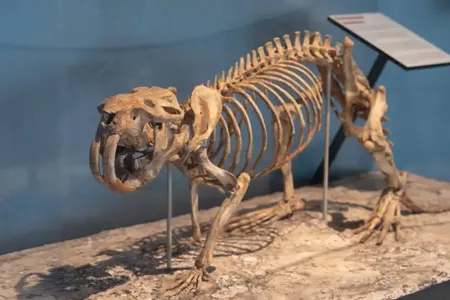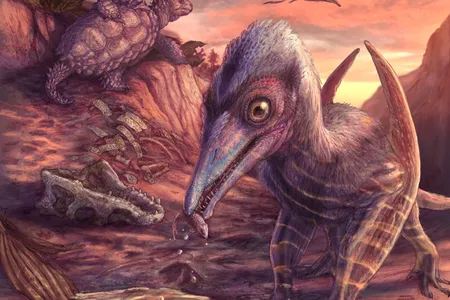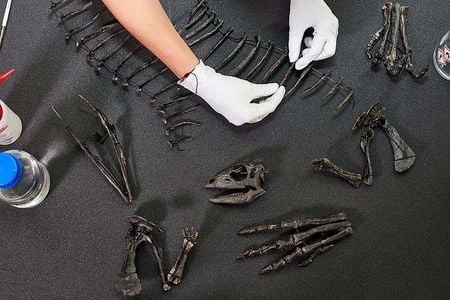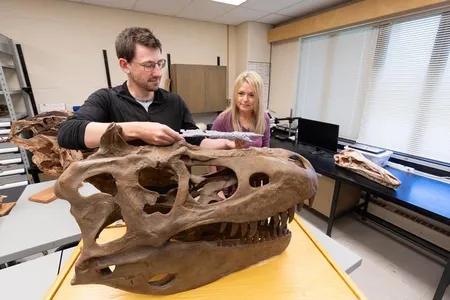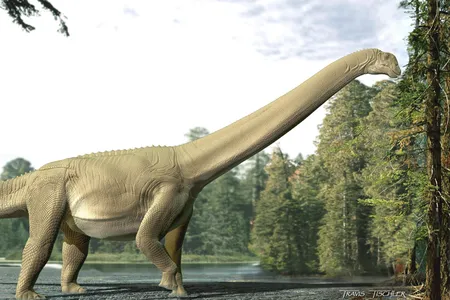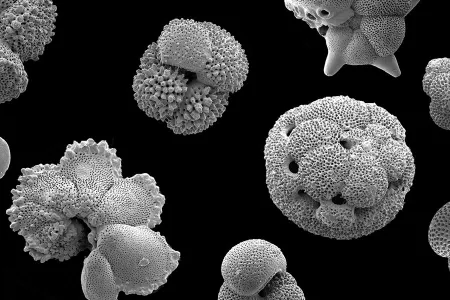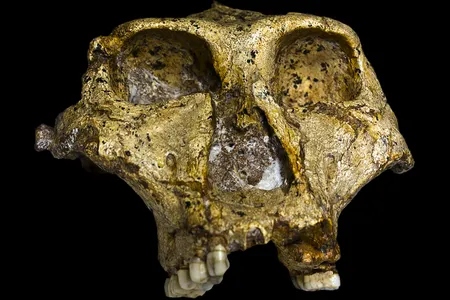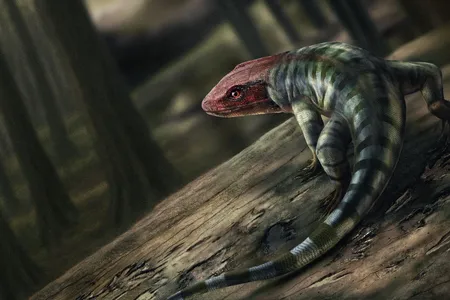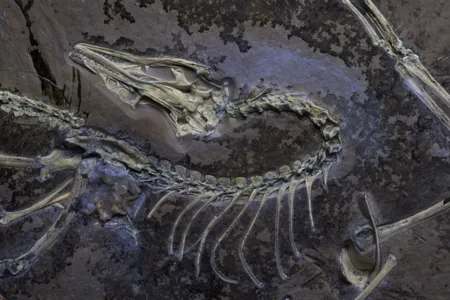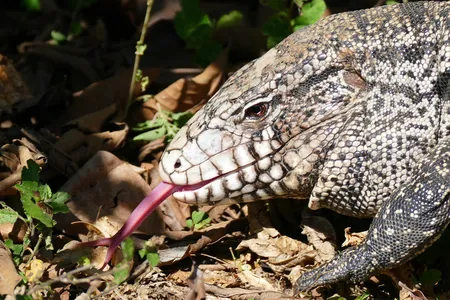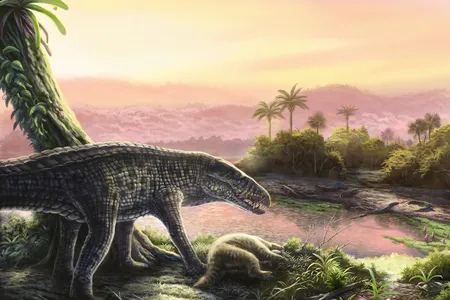This Surprising Ancient Reptile Had a Colorful, Corrugated Sail on Its Back. New Research Suggests It Was Used to Communicate
A 247-million-year-old fossil from a German natural history museum reveals the secrets of Mirasaura
Meet Ten Tyrannosaurs That Came Before T. Rex, From Small, Feathery Creatures to 30-Foot-Long Bone-Crushers
Everyone knows the famous tyrant lizard king, but its relatives amaze, too
Fossil Flipper Reveals Ichthyosaurs Hunted in Lethal Silence With Unique Adaptations for Stealth
An analysis of a roughly 180-million-year-old fossil fin reveals serrations and flexibility that might have served to dampen sound as the predator swam
Dinosaurs Gathered to Perform Mating Dances With Kicks and Spins at This Site in Colorado—and You Can Go See It for Yourself
Paleontologists have discovered what appears to be one of the largest dinosaur courtship arenas in the world, just 15 miles west of Denver
Scientists Recover Ancient Proteins From Animal Teeth Up to 24 Million Years Old, Opening Doors to Learning About the Past
Two new papers analyze fossils found in Canada and Kenya, respectively—vastly different environments for the preservation of genetic material
Preserved Blood Vessels Discovered in a Rib Bone From the World’s Largest T. Rex Could Shed Light on How Dinosaurs Healed
Scotty, a specimen unearthed in Canada, was probably injured in a fight, then died several months later
A Paleontologist Matched Two Halves of the Same Fossil Stored at Different Museums—and Discovered a New Species
Meet Sphenodraco scandentis, a tree-dwelling, lizard-like reptile that roamed around with the dinosaurs during the Late Jurassic period roughly 145 million years ago
Giant Sloths and Many Other Massive Creatures Were Once Common on Our Planet. With Environmental Changes, Such Giants Could Thrive Again
If large creatures like elephants, giraffes and bison are allowed to thrive, they could alter habitats that allow for the rise of other giants
‘Nothing Short of Magical’: Scientists Discover a Dinosaur Bone Nearly 800 Feet Beneath a Parking Lot at a Denver Museum
The partial vertebra appeared inside a 2.5-inch-diameter column of rock that researchers drilled, earning the title of the oldest and deepest dinosaur fossil found in Denver
Bear-Sized Giant Beavers Once Roamed North America, and They’re Now the Official State Fossil of Minnesota
The large, extinct creatures roamed the Twin Cities area more than 10,000 years ago and could grow to more than 200 pounds
A Bone Bed From the Dawn of the Dinosaurs Has Revealed the Oldest Known Pterosaur Found in North America
Fossil surprises abound in new research that unearths the history of the Triassic Period
‘Enigmatic’ Dog-Sized Dinosaur Reveals a New Species That Scampered Around Jurassic North America
The speedy, plant-eating creature lived in what is now Colorado roughly 150 million years ago, and its skeleton went on display in London this week
These ‘Dragon Prince’ Fossils Spent Decades in Museum Drawers. Now, They Could Rewrite the T. Rex Family Tree
Two partial skeletons housed in a Mongolia museum were reexamined by researchers and found to represent a previously unknown species
First Fossil Evidence That Sauropods Were Herbivores Supports a Widespread Assumption About the Long-Necked Dinosaurs
A recent discovery of a dinosaur’s preserved gut contents offers the first direct proof that sauropods were plant-eaters
These Tiny, Beautiful Fossils Detail the History of the Ocean
Bountiful remains of foraminifera reveal how organisms responded to climate disturbances of the past
Scientists Investigate 2.2-Million-Year-Old Tooth Enamel to Unravel the Mysteries of Ancient Human Relatives
By studying proteins preserved in teeth, researchers determined the sex of four Paranthropus robustus individuals that lived in southern Africa
Fossil Hunters Discover Earliest Known Footprints of a Reptile-Like Creature, Pushing Back the Timeline of Their Evolution
A new study suggests two fossil trackways found in Australia were made by an early amniote, a group that today includes reptiles, birds and mammals
The Famous, Feathered Dinosaur Archaeopteryx Could Fly, Suggests New Study of a ‘Beautifully Preserved’ Fossil
The Chicago Archaeopteryx features more soft tissue and delicate skeletal details than any known fossil of its kind, and paleontologists discovered it has a set of feathers key to flight in modern birds
Mysterious Fossil Found in Museum Storage Turned Out to Be a New, Extinct Lizard Species
Today, tegus are considered invasive creatures in Florida, but a new paper suggests they’ve lived in the southeastern United States at least once before—millions of years ago
Fossils Reveal Enormous, Crocodile-Like Reptiles Survived for Millions of Years Longer Than Previously Thought
New discoveries in the Dominican Republic suggest sebecids roamed the Caribbean as recently as 4.5 million years ago, long after they vanished from South America
Page 1 of 25
